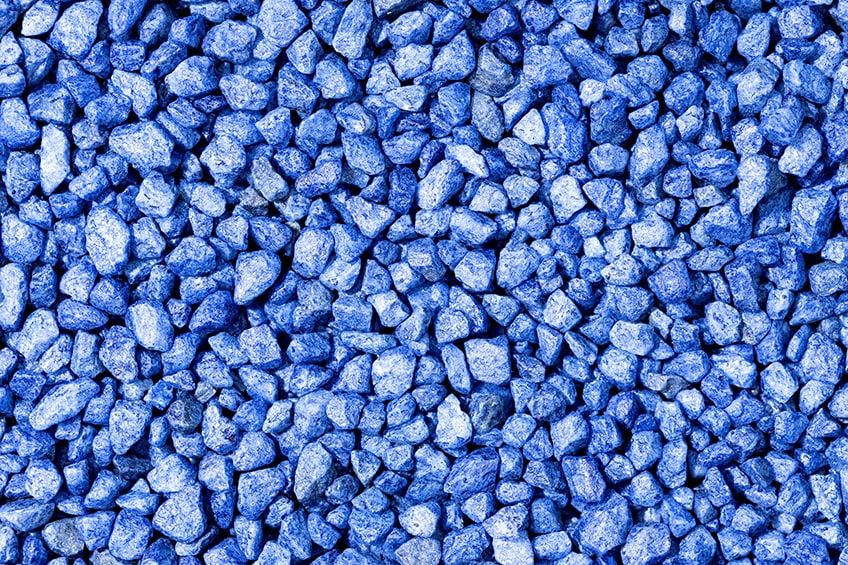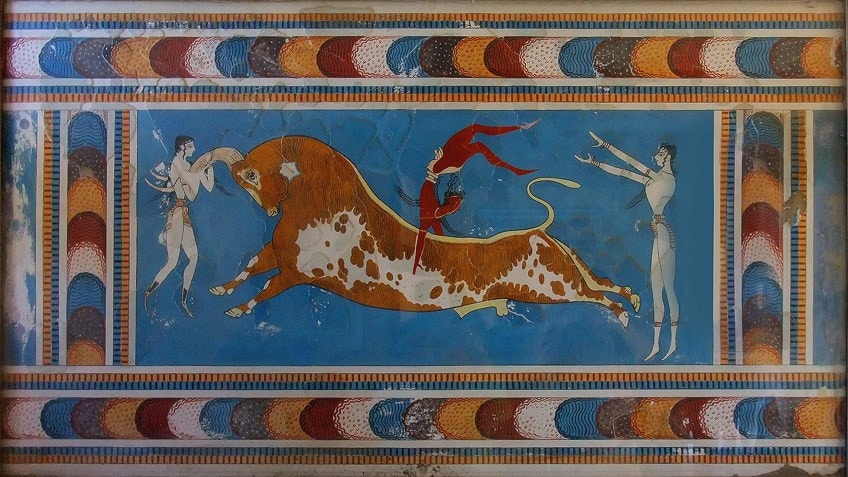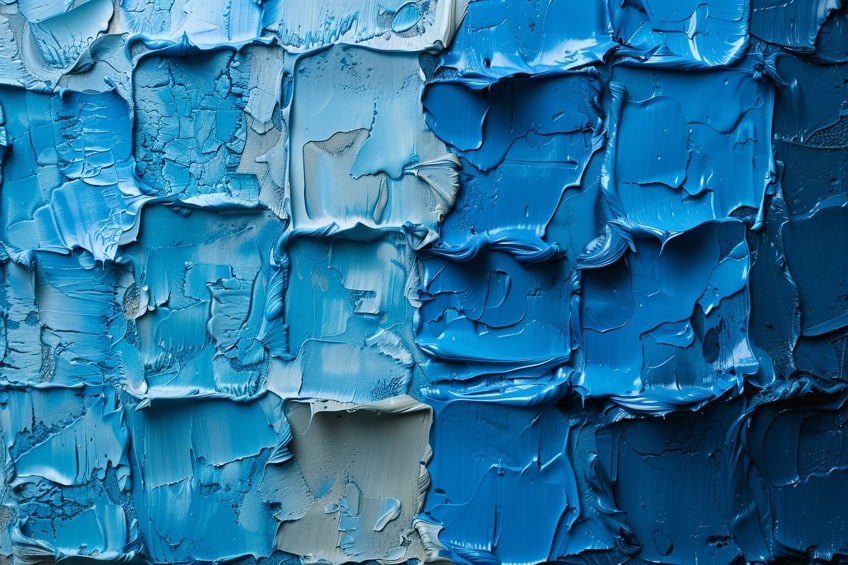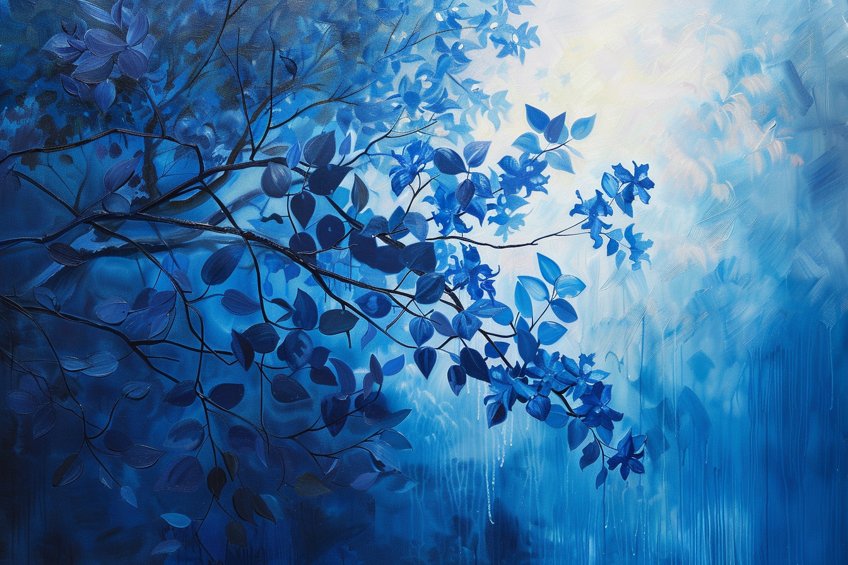History of the Color Blue – Cultural and Artistic Significance
The history of the color blue is rich and complex, tracing a journey from ancient civilizations to its widespread use today. Blue was historically a rare and prized color, as it did not frequently occur in natural pigments accessible to early humans. It played a significant role in ancient Egypt, where it was used in jewelry and artifacts, symbolizing power and prestige. Advancements in science and technology revolutionized blue, allowing it to become more accessible and affordable. The development of synthetic pigments like Prussian blue and ultramarine brought about significant changes in art and fashion. Artists found new ways to incorporate this vibrant color into their work, increasing the color’s cultural impact worldwide. Blue has become deeply embedded in language and expression, often associated with concepts of calmness and depth. Its prevalence in modern technology, from LED displays to automotive finishes, further underscores its importance. This journey from antiquity to modernity highlights how blue has continually evolved, maintaining its appeal across both time and disciplines.
Key Takeaways
- Blue started as a rare natural pigment with deep historical roots.
- Scientific breakthroughs made blue more accessible and impactful.
- Blue’s cultural, artistic, and technological significance endures today.
Origins of Blue in Natural Pigments
Natural blue pigments have significant importance in art and culture, with their origins tracing back to ancient civilizations. These pigments were primarily derived from minerals such as lapis lazuli and azurite, each contributing to different hues of blue in historical artifacts.
Lapis Lazuli and Ultramarine
Lapis lazuli, a deep-blue metamorphic rock, was one of the earliest materials used to produce blue pigments. This precious stone was mined primarily in Afghanistan and was highly prized for its vibrant color. When finely ground, it yields ultramarine, a pigment that was once more valuable than gold.

Artists used ultramarine extensively in Renaissance art to depict the Virgin Mary’s robes, marking its cultural and religious significance. The laborious process of extracting ultramarine from lapis lazuli made it exclusive and expensive. Its rarity and brilliance led to frequent mentions in historical texts describing the treasures of ancient civilizations.
Azurite and Egyptian Blue
Azurite, a copper carbonate mineral, provided another source of blue pigment in ancient times. Its deep azure color made it popular among artists and craftsmen. Unlike lapis lazuli, azurite was more readily available, often found in copper ore deposits.
The Ancient Egyptians were pioneers in creating synthetic pigments, and Egyptian blue stands out as the first synthetic blue pigment. Made from heating limestone mixed with copper compounds, it was widely used to decorate tombs and artifacts. This pigment reflects the Egyptians’ innovative use of available materials to replicate and preserve the coveted blue hue.
Blue in Ancient Civilizations
Ancient civilizations achieved remarkable feats in creating and using the color blue. Notably, the Egyptians pioneered the synthetic production of blue pigments; similarly, the blue hues found in artworks from the Roman Empire reveal their mastery of complex dyes and sourcing materials.
Egyptian Use of Blue
The Ancient Egyptians were groundbreaking in their development of Egyptian Blue, also known as cuprorivaite. This pigment was the first synthetic color, created around 2,200 B.C. It was made by heating a mixture of ground limestone, sand, and copper-containing minerals like azurite or malachite. Egyptian Blue was highly valued for its vivid hue and was often used in art and decoration.

This vibrant pigment adorned tombs, statues, and amulets, symbolizing divinity and the universe. Many studies have found remnants of Egyptian Blue on archaeological artifacts, underscoring its cultural significance. Its creation marked a significant advancement in the technical understanding of color chemistry and remains a notable achievement in the history of pigment production.
Blue in the Roman Empire
The Romans admired the artistic achievements of earlier civilizations and borrowed extensively from them, including the use of blue. They acquired blue pigments through trade, particularly Lapiz Lazuli, which provided a deep blue color for paintings and murals. Romans used blue in mosaics, frescoes, and decorative arts to create visually striking works.

Much of the blue dye used by the Romans came from indigo and woad plants. They were primarily used for dyeing textiles. This widespread use evidenced blue’s attractiveness and versatility across social classes. The Romans’ incorporation of blue in their art and architecture demonstrated their keen appreciation for color and its power to convey status and sophistication.
Scientific Advancements Influencing Blue
Scientific advancements have deeply influenced the understanding and use of the color blue. Significant contributions like Isaac Newton’s work on the color spectrum and modern studies on the wavelengths of blue have expanded the comprehension of this vibrant hue.
Isaac Newton and the Color Spectrum
Isaac Newton’s experiments with light were pivotal in how humans perceive color. By passing sunlight through a prism, Newton demonstrated that white light split into a spectrum of colors, including blue. This discovery illuminated the concept of the visible spectrum, a fundamental idea in physics. Newton’s work established foundational knowledge on how different colors, based on their specific wavelengths, interact with human vision.
Blue light, in particular, exists within a wavelength range of about 450 to 495 nanometers. This deeper understanding through physics and experimentation has influenced numerous fields, from art to technology, by allowing artists and scientists to classify color based on measurable parameters.

Modern Science of Color
Modern science has further dissected the anatomy of blue, examining the wavelengths that produce blue hues. In today’s scientific framework, it’s understood that shorter wavelengths possess more energy, impacting how blue is perceived and used in technology. Advances in optical technology have also leveraged this knowledge, notably in screens and LED lights, where blue light is a critical component of producing white light and enhancing image displays. Researchers continue to explore new pigments and applications for the color.
These explorations include the development of materials like YInMn Blue, a pigment discovered less than a decade ago, renowned for its vibrant hue and stability, further propelling the field of color science forward.
Cultural Significance of Blue
Blue has held an esteemed place throughout history, often associated with nobility, divinity, and emotion. Its wide-ranging significance spans from royal connotations to emotional symbolism in modern psychology.
Blue in Royalty and Religion
Blue has long been associated with royalty and divine figures across various cultures. In medieval Europe, the substance known as royal blue was used for clothing worn by kings and queens, signifying their elevated status. The pigment was rare and costly, reflecting both power and wealth.
In religious contexts, blue often symbolizes purity and protection. For example, the Virgin Mary is frequently depicted wearing blue robes in Christian art, highlighting her revered status. This association with the sacred is not unique to Christianity; other religions also often use blue as a color of holiness and the divine.
Psychology and Symbolism of Blue
The psychological impact of blue is both profound and varied. It is often linked to feelings of calmness and stability due to its prevalence in nature, such as the sky and sea. Individuals frequently report feeling more at peace when exposed to the color blue.

Conversely, blue can also represent sadness, as seen in phrases like “feeling blue.” This duality underscores its complex nature in human emotion. Artists and designers utilize these associations to evoke specific moods and messages, making blue a critical tool for emotional expression in visual arts and environments.
Development of Synthetic Blue Pigments
The journey of synthetic blue pigments is marked by key innovations that revolutionized art and industry. This section explores breakthroughs in creating lasting blue hues, such as Prussian Blue and Cobalt Blue, as well as alternative methods for producing French Ultramarine and Synthetic Indigo Dye.
Prussian Blue and Cobalt Blue
Prussian Blue, discovered in the early 18th century, was the first modern synthetic pigment. It was accidentally created by a chemist in Berlin experimenting with iron salts and potassium. Known for its intense, deep color, Prussian Blue became a favorite among artists like Hokusai. It offered a cost-effective alternative to natural pigments like lapis lazuli.

Cobalt Blue, identified in 1802, emerged from a synthesis involving cobalt salts and alumina. It provided a stable, vivid hue resistant to weathering and sunlight. Cobalt Blue was celebrated for its unique brilliance and used by artists such as Van Gogh. It captivated the art world with its true, lasting blue shade.
French Ultramarine and Indigo Dye
French Ultramarine was developed in France in 1828 as a synthetic version of the costly natural ultramarine derived from lapis lazuli. This pigment was created by heating kaolin, sulfur, and other ingredients. As a result, it offered artists access to a high-quality blue without the expense of natural materials, influencing 19th-century art significantly.

Synthetic Indigo Dye, widely used for textiles, especially jeans, was developed in the late 19th century. It replaced natural indigo by 1913. The process involved a complex chemical synthesis starting with aniline, allowing mass production of the dye at a lower cost, enabling its widespread use.
The Technological Impact of Blue
The color blue has significantly shaped modern technology, playing a crucial role in energy efficiency and digital advancements. Blue LEDs have revolutionized lighting and electronic displays, while innovative uses of blue in technology continue to emerge.
Blue LEDs and Energy
Blue LEDs represent a major milestone in energy-efficient lighting. Developed in the 1990s, blue light-emitting diodes are fundamental in creating white LED light by combining blue, red, and green LEDs. This invention earned the 2014 Nobel Prize in Physics due to its impact on global energy consumption. Compared to traditional incandescent bulbs, LED lighting consumes less power and has a longer lifespan.

This technology has enabled energy-efficient lighting solutions in homes, industries, and public spaces, leading to reduced electricity use and cost savings. Additionally, YInMn Blue, a new pigment discovered in 2009, has shown potential in enhancing energy efficiency. Its cooling properties when used in paints and coatings can contribute to energy savings by reducing the need for air conditioning in buildings.
Blue in Digital Displays and Technology
Blue plays a crucial role in digital display technology. Liquid Crystal Displays (LCDs) use blue light to create vibrant colors and improve image clarity. These displays are found in a wide range of devices, from smartphones to televisions. The development of Organic Light Emitting Diodes (OLEDs) further utilized blue light to enhance display technology. OLEDs offer deeper blacks and more vibrant colors while being energy-efficient.
The use of blue in tech extends beyond displays. In optical data storage systems, blue laser technology increases data storage capacity. Its shorter wavelength allows for packing more information into a smaller space. The impact of blue in technology is vast, driving advancements that improve efficiency and usability in various domains.
Role of Blue in Fashion and Art
Blue has played a significant part in both the fashion industry and the world of art. This color has been a symbol of class in clothing and a tool for artistic innovation.
Blue Jeans and Fashion Industry
Blue jeans have become a staple in the wardrobe of many around the world. Their origin dates back to Levi Strauss in the 19th century, who crafted them for miners. Originally made from denim dyed with indigo, blue jeans evolved into everyday wear during the 20th century. This transition occurred as they moved from workwear to fashion icons, symbolizing both comfort and style.

Today, blue jeans are available in a variety of shades and styles, ranging from navy to lighter cerulean tones. They are popular across all age groups and regions, emphasizing their versatility and lasting appeal. The fashion industry’s embrace of blue jeans has led to innovations in fabric treatments and dyeing processes, reflecting the cultural significance of blue as a color synonymous with both tradition and modernity.
Blue in Art and Artistic Expression
In art, blue has been a centerpiece of creative exploration. The development of blue pigments, such as ultramarine and cerulean blue, has allowed artists to produce vibrant and emotive works. Used extensively in paintings, blue conveys mood and depth, often representing the infinite and the divine.

Notably, International Klein Blue, developed by Yves Klein, has become a distinct symbol of artistic innovation. Klein used this intense hue to emphasize the immaterial and spiritual in his works, impacting contemporary art significantly. Blue’s versatility is also seen in its application across various mediums such as ceramics and textiles. Its historical resonance and visual impact make it a color of choice for artists seeking to evoke emotion and meaning in their creations.
Contemporary Production of Blue
The modern production of blue relies heavily on sustainable practices and technological advancements. These innovations not only offer eco-friendly options but also enhance the quality and range of blue hues available today. From bio-indigo to cutting-edge pigments, the industry has truly evolved.
Bio-indigo and Sustainable Practices
Bio-indigo is derived from plant sources, making it an eco-friendly alternative to traditional indigo dyes. Firms are focusing on reducing the environmental impact of blue dye production by employing sustainable agricultural methods and minimizing chemical waste.

Modern innovations have made it possible to produce bio-indigo in laboratories, maintaining the vibrant hue without the need for harmful chemicals. This approach not only caters to the fashion industry’s demand for eco-conscious products but also offers a pure, natural dye that meets high-quality standards. The adoption of bio-indigo emphasizes the shift toward more sustainable options in the global textile market.
Advancements in Blue Paints and Dyes
Recent developments in blue paints and dyes have revolutionized the industry. One such innovation is YInMn Blue, a pigment created accidentally by researchers, offering a vibrant and stable hue without the toxicity associated with other pigments. This pigment has sparked interest due to its vivid color and durability, making it suitable for various applications, from art to industrial uses.
The introduction of new blue pigments has expanded the palette available to artists and designers. Moreover, advances in materials science have allowed the creation of dyes that offer greater resistance to fading and environmental degradation. These improvements contribute to more sustainable, longer-lasting products, meeting the requirements of various industries.
Blue in Language and Expression
The color blue has played a significant role in linguistic evolution and cultural expression throughout history. This section examines how blue has been integrated into languages, both as a color term and an influential element in idioms and expressions.
Blue in the Evolution of Languages
Blue was among the last colors to be named in many cultures. Ancient languages like those of the Greeks and some others initially lacked a specific term for blue, which was often described in terms of other colors, such as green or violet. Linguist Guy Deutscher, in “Through the Language Glass,” discusses how color terms evolved as societies became more complex, enabling the introduction of blue into linguistic vocabularies.

In the English language, blue entered as a term relatively late, around the 13th century. It is believed that the term originated from the Old French “bleu,” a reflection of the cultural exchanges in medieval Europe. The gradual introduction of blue in language highlights the broader evolution of color perception and symbolism across different regions and societies.
Expressions and Idioms Featuring Blue
Blue is widely used in expressions and idioms, often to convey a spectrum of emotions and ideas. For example, “feeling blue” refers to sadness or melancholy. This usage underscores how color words can become metaphors in everyday language, connecting emotions with universally recognizable elements like the color of the sky.
Another common expression is “out of the blue,” which describes something unexpected. Such phrases illustrate the versatility and cultural depth of blue in language. Its idiomatic usage spans many languages, contributing to a rich tapestry of expressions that reflect societal values, emotions, and experiences. Blue’s cultural resonance is evident in these idioms, showing its power to transcend linguistic boundaries.
Cite this Article
artincontext, , “History of the Color Blue – Cultural and Artistic Significance.” Art in Context. February 21, 2025. URL: https://artincontext.org/history-of-the-color-blue/
, a. (2025, 21 February). History of the Color Blue – Cultural and Artistic Significance. Art in Context. https://artincontext.org/history-of-the-color-blue/
, artincontext. “History of the Color Blue – Cultural and Artistic Significance.” Art in Context, February 21, 2025. https://artincontext.org/history-of-the-color-blue/.








